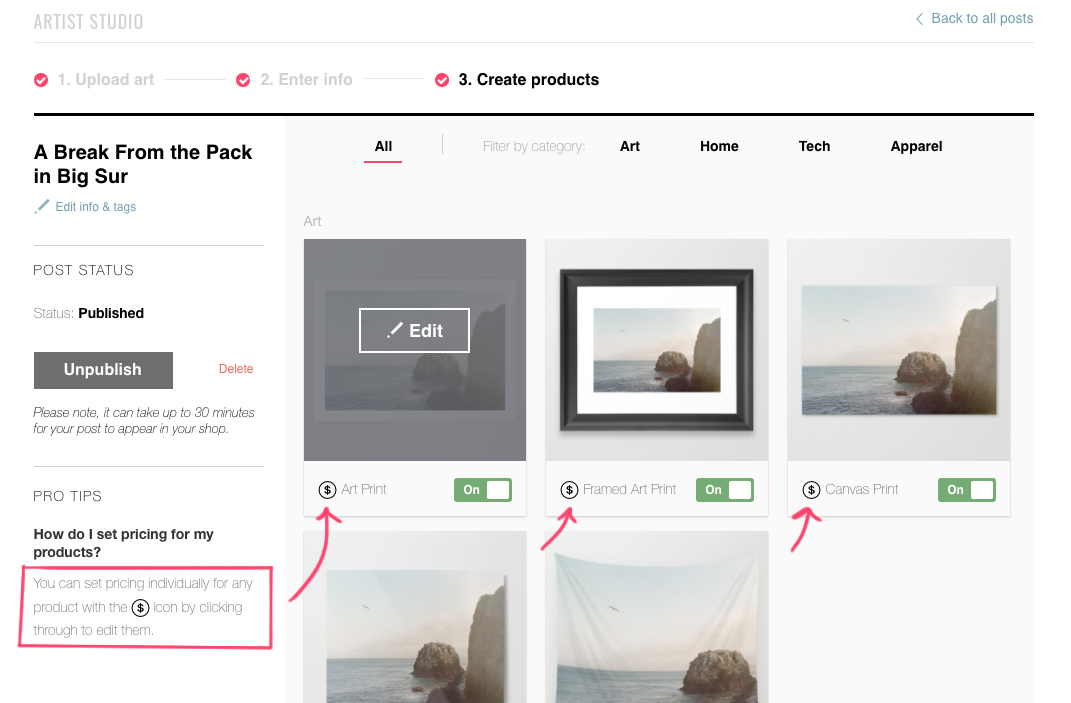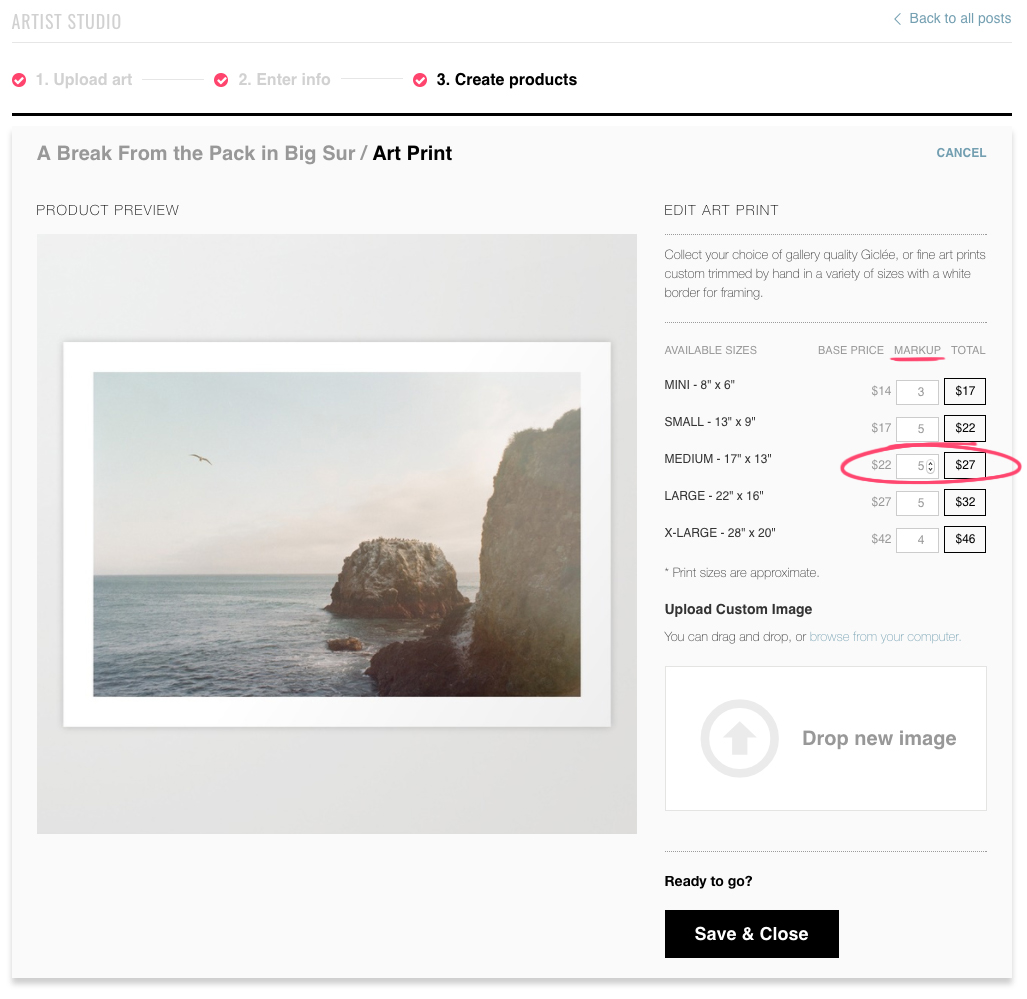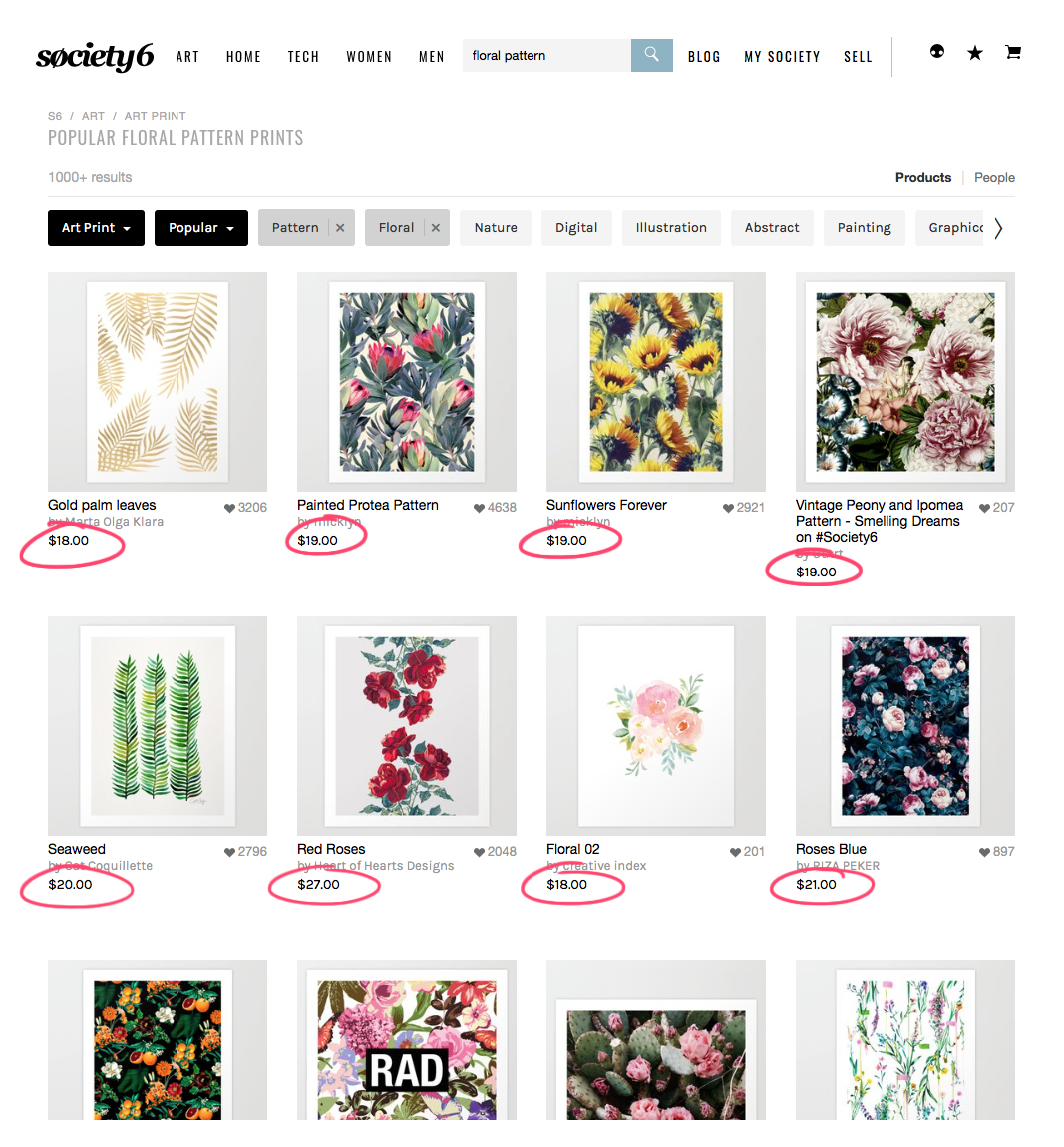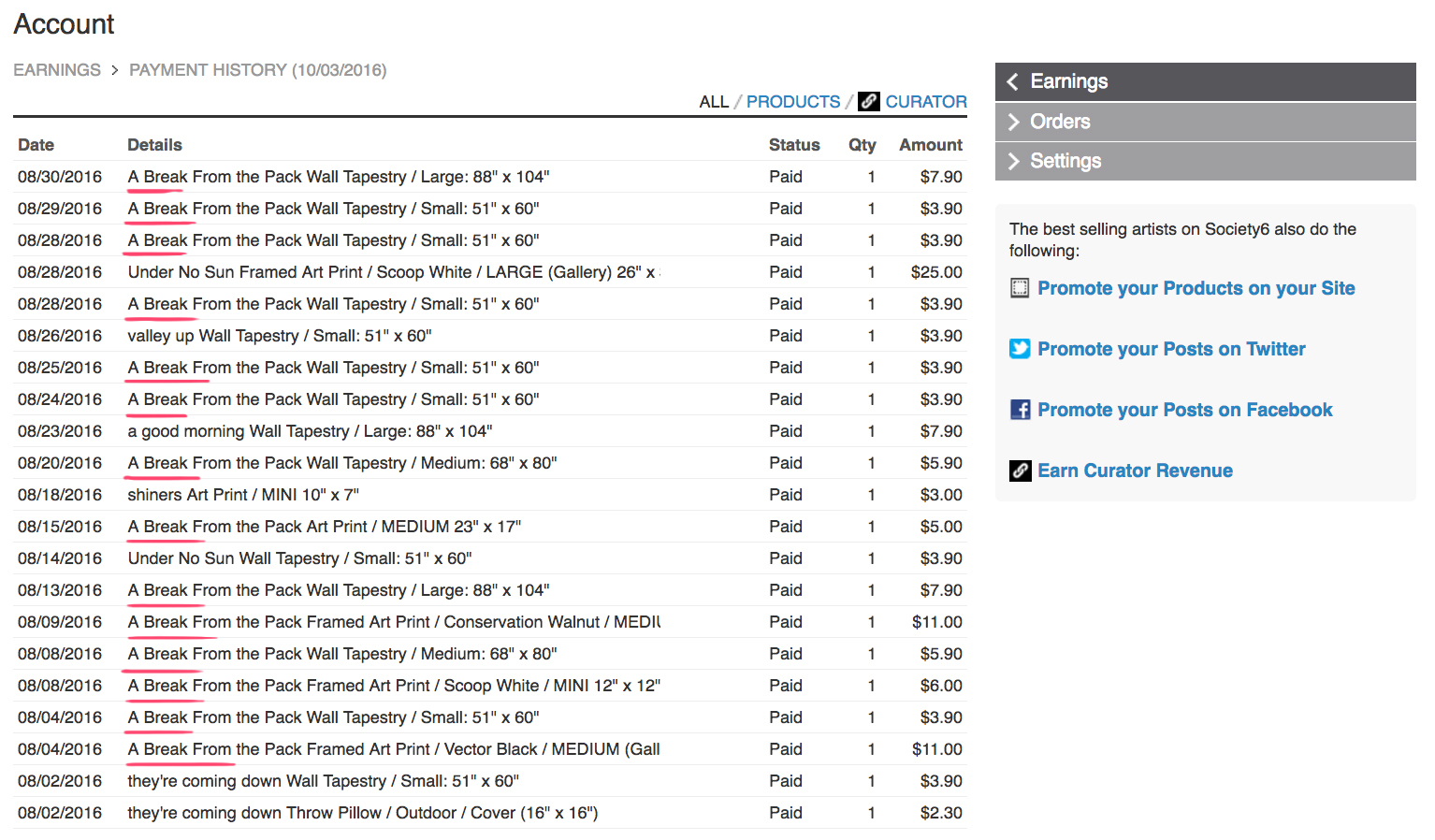You’ve uploaded your artwork–now let’s walk through pricing it competitively.
As visual content continues to dominate our social feeds, access to and interest in affordable art prints has also seemed to increase–from both artists looking to sell and customers looking to buy. Art Prints are a very popular Society6 product, so figuring out how much to charge for your open edition prints is well worth your while. Here’s some great tips so you can start pricing fairly, competitively and profitably.
HOW TO EDIT ROYALTIES
Once you’ve uploaded your artwork and entered your metadata, click “Continue to create products” to begin activating products. From this page, hover over and click Art Prints, Framed Art Prints or Canvas Prints to start adjusting your prices.


1 | Research how your peers price their artwork
Hands down, the most consistent piece of advice our top-sellers offered was to research what “similar” artists were charging. You can always fine-tune pricing along the way, but knowing what the general market value of your artwork is will help you identify what growth looks like when sales improve.
I base my prices on what my peers are charging, and match it. When I say my peers, I mean artists and illustrators at a similar level as me. If you price yourself similarly to your peers, you’ll avoid overvaluing or undervaluing yourself. –Marc Johns
I research and observe. I personally try to stay in the middle. I don’t want my work to be more expensive than others, but I also want to be priced fair and worthy. But the price can vary depending on the market. Each shop has a certain type of customer. Finding out as much as possible about them, like average age, how much they spend on a purchase, mainly female or male, etc. helps. That way you can adapt better to your audience. –Bianca Green
PRO TIP: Search for your artwork on Society6. See what else pops up and what they’re charging for prints. See the “floral pattern” search below as an example.

2 | Understand who you’re selling to
I know, based on social media, that many of my buyers are younger, in their teens and early twenties. Based on that knowledge I price my pieces a bit lower because I want my art to be more accessible to students and those who are interested in my art! –Leah Flores
3 | Ask other Society6 artists how they price
When I started on Society6 I had no idea how to price my work. So, I asked other artists in this community and everyone was so helpful and lovely. As long as you are happy and satisfied with what you’re getting–that’s what matters. –Sara Eshak
4 | If you’re seeing consistent sales, respond to demand
If my sales are continuously increasing (not only in Christmas season) or if my originals are sold out regularly, it’s time to increase prices a little bit (around 10-20%). Though always remember to keep some affordable art for the fans – they are your family! –Tanya Shatseva
PRO TIP: Hover over your profile icon and click on My Earnings. Click on Pending, Paid, or any time period in your Payment History. If you have some sales under your belt, find out what Artwork is selling the best and test incremental price increases.


5 | Do a gut check
The sale of your artwork should feel good and fair. A great way to gut check your Art Print price is to see if you feel taken advantage of after making the sale. If so, increase your royalty so it feels more fair. If you’re getting fan feedback that your artwork is too expensive, bring your prices down. Obviously, you’ll need to set realistic expectations for pricing your artwork based on demand, but you’ll find that number by starting low and increasing until you notice sales falling off.
6 | Finally, there is no silver bullet to pricing your artwork for open edition prints
It comes down to what you want to do based on where you’re at. Doing research to establish competitive baseline prices is the best place to start. As you identify demand for your artwork or as your popularity increases, you can adjust your pricing to earn more sales or more money per sale.
Ultimately, the value of anything is what someone is willing to pay for it. It’s our job as sellers to find what that number is. Share your tips below!
Featured Artwork by EnvyArt
Comments